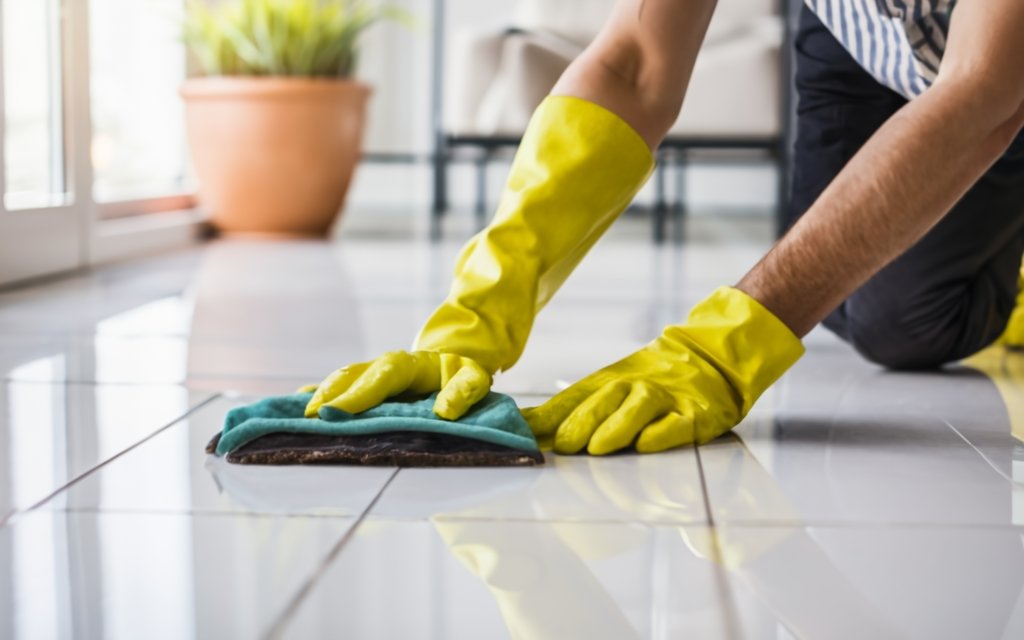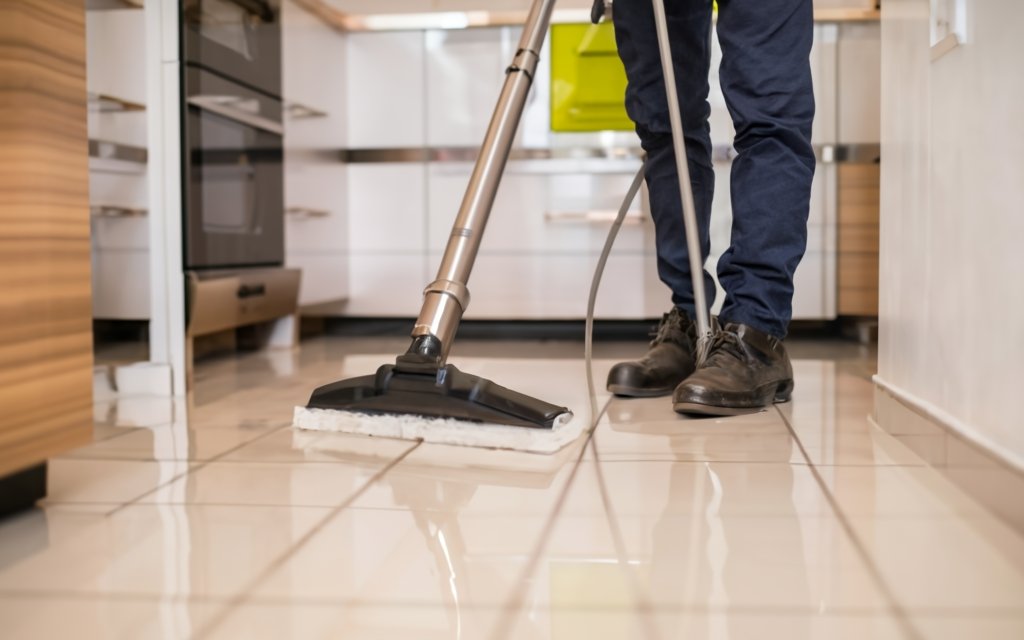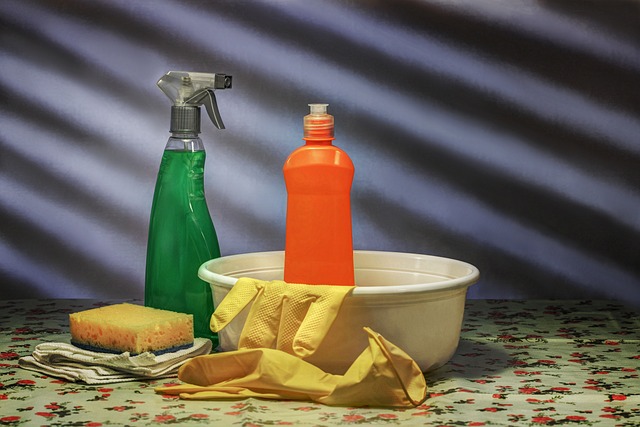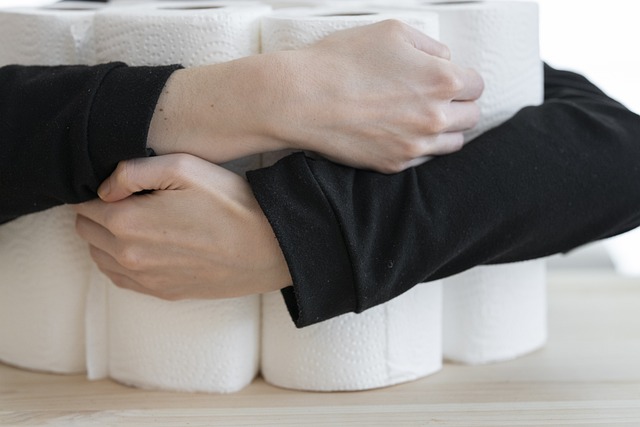The best vacuum for stairs is the Shark Navigator Lift-Away ADV Upright Vacuum. It offers great performance and versatility, making it perfect for cleaning stairs.
Another excellent option is the Bissell PowerForce Helix Vacuum, which provides great value for money. These vacuums are highly recommended for effectively cleaning stairs. When it comes to cleaning stairs, finding the right vacuum is crucial. Regular vacuum cleaners may not be suitable for this task due to their bulkiness and lack of maneuverability.
Therefore, it’s essential to invest in a vacuum specifically designed for stairs. We will explore the best vacuums for stairs that are available in the market. Whether you need a handheld vacuum or an upright vacuum, we have got you covered. We will also highlight the key features and customer reviews to help you make an informed decision. So, let’s dive in and find the best vacuum for your stairs.
Importance Of Choosing The Right Vacuum For Stairs
Vacuuming stairs can be a challenging task, as they are often harder to clean than other areas of the home. It requires a specialized tool that is designed to effectively remove dirt, dust, and debris from each step safely and efficiently. Choosing the right vacuum for stairs is crucial for maintaining a clean and healthy living environment, as well as ensuring your safety while cleaning. In this article, we will explore the importance of selecting the right vacuum for stairs, highlighting safety and efficiency considerations, as well as factors to keep in mind when making your choice.
Safety And Efficiency Considerations
When it comes to vacuuming stairs, safety should be a top priority. Traditional full-size upright vacuums can be bulky and difficult to maneuver, increasing the risk of accidents and potential injuries. Using the wrong vacuum can also result in inefficient cleaning, leaving behind dirt and debris that can accumulate over time and compromise the cleanliness of your stairs.
Factors To Keep In Mind
There are several factors to consider when choosing the right vacuum for stairs:
- Size and Weight: Opt for a lightweight and compact vacuum that is easy to carry and maneuver on each step.
- Attachments: Look for a vacuum that comes with specialized stair cleaning attachments, such as a crevice tool or a powered brush roll, to effectively remove dirt and debris from hard-to-reach areas.
- Suction Power: Ensure that the vacuum has sufficient suction power to effectively clean and remove dirt and debris from your stairs.
- Filter System: Consider a vacuum with a high-quality filter system to trap allergens and prevent them from being released back into the air.
- Cord Length or Battery Life: Evaluate the cord length or battery life of the vacuum to ensure it provides enough coverage for cleaning your entire staircase without the need for frequent unplugging or recharging.
By thoroughly considering these factors when choosing the right vacuum for your stairs, you can ensure efficient and safe cleaning, while also prolonging the lifespan of your vacuum by using it for its intended purpose.
Ultimately, selecting the right vacuum for stairs is essential for maintaining a clean and healthy living space, as well as ensuring your safety during the cleaning process. By understanding the safety and efficiency considerations and keeping key factors in mind, you can make a well-informed choice that meets your specific needs and keeps your stairs looking their best.
Factors To Consider When Buying A Vacuum For Stairs
When it comes to cleaning stairs, a regular vacuum cleaner might not be the most efficient choice. Stairs require a specialized vacuum that can easily maneuver and reach different angles and corners. So, before you make a purchase, consider these essential factors to ensure you get the best vacuum for stairs.
Size And Weight
The size and weight of the vacuum cleaner play a crucial role when it comes to cleaning stairs. Since stairs can be narrow and challenging to navigate, you need a vacuum that is lightweight and compact. Look for a vacuum that is portable and easy to lift, allowing you to effortlessly carry it up and down the stairs.
Suction Power
The suction power of the vacuum is another critical factor to consider. Stairs often accumulate dust, dirt, and pet hair, so you need a vacuum with strong suction to thoroughly clean these surfaces. Opt for a vacuum that offers powerful suction to effectively remove debris from each step and ensure a deep clean.
Attachments And Accessories
In order to clean stairs efficiently, the vacuum should come with attachments and accessories specifically designed for this task. Look for a vacuum that includes a stair brush attachment, crevice tool, or upholstery tool. These attachments will help you clean the corners, edges, and hard-to-reach areas of the stairs effectively.
Cord Length And Maneuverability
The cord length and maneuverability of the vacuum are also essential considerations. Make sure the vacuum has a long enough cord that allows you to move freely without constantly unplugging and searching for a new outlet. Additionally, consider a vacuum with a swivel head that can easily maneuver around corners and tight spaces.
By considering these factors – size and weight, suction power, attachments and accessories, cord length, and maneuverability – you can find the perfect vacuum for stairs that will make your cleaning routine hassle-free and deliver outstanding results.
Top Features To Look For In A Vacuum For Stairs
When it comes to keeping your stairs clean and dust-free, having a vacuum specifically designed for this task can make all the difference. With the right features, you can ensure a deep clean while also making the process effortless and efficient. Whether you have carpeted stairs or hardwood steps, here are some essential features to look for when choosing the best vacuum for stairs.
Powerful Suction For Deep Cleaning
A vacuum with powerful suction is crucial when it comes to deep cleaning your stairs. Look for a model that has strong suction capabilities to effectively remove dirt, dust, and debris from your stairs, leaving them spotless and fresh. This ensures that even the most stubborn dirt particles are picked up, giving your stairs a truly deep clean.
Lightweight And Compact Design
When maneuvering around stairs, a lightweight and compact vacuum is essential. Bulky and heavy vacuums can be challenging to carry up and down the stairs, making the cleaning process cumbersome and tiring. Opt for a vacuum that is lightweight and compact, allowing for easy handling and maneuverability. This will enable you to effortlessly navigate your way through each step, ensuring every nook and cranny is thoroughly cleaned.
Portable And Easy To Maneuver
Portability is another important factor to consider when choosing a vacuum for stairs. Look for a vacuum that is easy to carry and maneuver. Features like a comfortable handle and a swivel head will make it easier to navigate the vacuum around your stairs without straining your wrists or arms. This ensures a hassle-free cleaning experience, allowing you to clean your stairs with ease and precision.
Versatile Attachments For Different Surfaces
Stairs can have different surfaces, such as carpet or hardwood, and each requires specific cleaning methods. To ensure efficient cleaning, opt for a vacuum that comes with versatile attachments designed for different surfaces. Attachments like a crevice tool, upholstery brush, and motorized brushroll for carpets will allow you to tackle different areas and surfaces effectively, ensuring a thorough and customized cleaning experience.
Long Cord Or Cordless Options
Having a vacuum with a long cord or a cordless option is essential when cleaning stairs. A long cord eliminates the need for frequent unplugging and re-plugging as you move up and down the stairs, providing uninterrupted cleaning. On the other hand, a cordless vacuum offers ultimate freedom of movement and eliminates the hassle of dealing with cords altogether. Consider your preferences and choose a vacuum with a long cord or a cordless option to make your stair cleaning experience seamless and efficient.
Reviews Of The Best Vacuums For Stairs
When it comes to keeping your stairs clean and free of dirt and debris, having the right vacuum can make all the difference. In this section, we will review some of the best vacuums specifically designed for cleaning stairs.
Dyson V8 Absolute
The Dyson V8 Absolute is a top-rated vacuum known for its powerful suction and versatility. With its cordless design, you can easily maneuver it up and down the stairs without being limited by cords. The V8 Absolute also comes with a variety of attachments that make cleaning stairs a breeze. Whether you need to tackle pet hair, dust, or small debris, this vacuum has you covered.
Shark Navigator Lift-away Professional Nv356e
If you’re looking for a vacuum that is both efficient and affordable, the Shark Navigator Lift-Away Professional NV356E is a great option. It features a lift-away canister that allows you to clean stairs with ease. With its advanced swivel steering and powerful suction, this vacuum enables you to reach every nook and cranny of your stairs. It also comes with a wide range of accessories, including a pet power brush for tackling stubborn pet hair.
Bissell Cleanview Swivel Rewind Pet Upright Bagless Vacuum Cleaner
The Bissell Cleanview Swivel Rewind Pet Upright Bagless Vacuum Cleaner is specifically designed for pet owners who need to tackle pet hair on their stairs. It comes with specialized pet tools, including a pet hair corner tool and a pet turbo eraser tool, making it easy to remove pet hair and dander from your stairs. With its powerful suction and swivel steering, this vacuum is not only great for stairs but also for cleaning other areas of your home.
Hoover Linx Cordless Stick Vacuum Cleaner
If you prefer a cordless and lightweight option, the Hoover Linx Cordless Stick Vacuum Cleaner is worth considering. With its slim design and powerful suction, it can easily reach and clean stairs without any hassle. The vacuum also features an interchangeable battery, allowing you to extend your cleaning time. Its bristle brush helps effectively remove dirt and debris from carpeted stairs, ensuring a thorough and efficient clean.
No matter which vacuum you choose from this list, you can rest assured that it will effectively clean your stairs and make the task much easier. Don’t let dirty stairs be a source of frustration – invest in a high-quality vacuum and enjoy a clean and fresh staircase.
Pros And Cons Of Different Vacuum Types For Stairs
When it comes to cleaning stairs, having the right vacuum can make all the difference. But with so many options available, it can be overwhelming to choose the best one for your needs. In this article, we’ll discuss the pros and cons of different vacuum types for stairs: upright vacuums, canister vacuums, stick vacuums, and handheld vacuums. Each type has its own unique features that may suit your specific requirements, so let’s dive in and find the perfect vacuum for your stairs.
Upright Vacuums
Upright vacuums are a popular choice for many homeowners due to their powerful suction and ease of use. These vacuums usually come with various attachments and accessories, making them versatile for cleaning different surfaces. When it comes to stairs, upright vacuums can be a bit bulky and heavy, making it challenging to carry and maneuver them. However, many newer models come with features like detachable canisters or lift-away options, allowing you to easily clean stairs without straining your back. Overall, upright vacuums are great for deep cleaning carpets on stairs but may require a bit more effort in terms of maneuverability.
Canister Vacuums
Canister vacuums are known for their compact and lightweight design, making them excellent for cleaning stairs. These vacuums consist of a separate canister and a long hose, which offers excellent flexibility and reachability when cleaning hard-to-reach areas. Canister vacuums often come with various attachments that are specifically designed for stairs, such as brush heads and crevice tools. This makes them ideal for effectively cleaning both carpeted and hardwood stairs. However, some drawbacks of canister vacuums include limited suction power compared to upright vacuums, the need to drag the canister behind, and potential difficulty in storing due to their larger size.
Stick Vacuums
Stick vacuums are lightweight and slim, making them easy to maneuver on stairs. They are generally cordless, which offers excellent portability and convenience in navigating around tight spaces. Stick vacuums work best on hard floors and low-pile carpets, so they may not be as effective on thick carpets or deep-pile rugs. These vacuums usually come with attachments like brush heads and crevice tools, allowing you to clean stairs more efficiently. However, stick vacuums often have smaller dust bins, so frequent emptying may be required for larger cleaning tasks. Additionally, the battery life of cordless stick vacuums can be a limiting factor, especially when cleaning a larger set of stairs.
Handheld Vacuums
Handheld vacuums are compact, lightweight, and specifically designed for quick spot cleaning. They are perfect for tackling small messes, pet hair, and crumbs on stairs. Handheld vacuums are easy to carry and maneuver, making them great for cleaning tight corners and narrow spaces. They often come with attachments like brush heads and crevice tools, allowing you to clean stairs thoroughly. However, handheld vacuums have limited suction power compared to larger vacuum types, which means they may take more time and effort to clean larger areas. They also have smaller dust bins, requiring frequent emptying, especially when dealing with extensive staircases.
To summarize, each vacuum type has its own set of pros and cons when it comes to cleaning stairs. Upright vacuums offer powerful suction but may be bulkier to carry. Canister vacuums are compact and versatile but may lack the same level of suction power. Stick vacuums are lightweight and portable but may not be as effective on thicker carpets. Handheld vacuums are convenient for quick spot cleaning but may require more time for larger areas. Consider your specific needs and preferences to choose the best vacuum type for keeping your stairs clean and dirt-free.
Tips For Cleaning Stairs Effectively
Cleaning stairs can be a challenging task, especially when it comes to removing dirt, dust, and debris from hard-to-reach areas. However, with the right techniques and tools, you can keep your stairs spotless and hygienic. Here are some effective tips for cleaning stairs:
Proper Technique For Vacuuming Stairs
Vacuuming stairs requires a different technique than cleaning other surfaces. Follow these steps to ensure a thorough clean:
- Start from the top step and work your way downwards. This prevents dirt from falling onto already cleaned areas.
- Use a lightweight and maneuverable vacuum cleaner that is specifically designed for stairs. This makes it easier to carry and navigate on each step.
- Hold the vacuum securely and use short, overlapping strokes to cover the entire surface of each step. This ensures that no dirt or debris is left behind.
- Pay extra attention to the edges and corners of the steps, as these areas tend to accumulate more dirt and dust.
- If your vacuum cleaner has a brush attachment, use it to agitate the carpet fibers and dislodge any embedded dirt.
Using Attachments For Hard-to-reach Areas
Stairs often have hard-to-reach areas, such as crevices between steps or tight corners. To effectively clean these areas, make use of the attachments that come with your vacuum cleaner:
| Attachment | Function |
|---|---|
| Crevice tool | Use this attachment to reach narrow gaps between steps or along the edges. |
| Upholstery tool | If your stairs have upholstered surfaces, use this tool to remove dirt and pet hair. |
| Extension wand | If the height of your stairs exceeds the reach of your vacuum cleaner, attach the extension wand to clean higher steps. |
By using these attachments, you can effectively clean every nook and cranny of your stairs, ensuring a thorough and hygienic result.
Remember to regularly empty the vacuum cleaner’s dustbin or change the bag to maintain optimal suction and prevent clogging.
With these tips and techniques, you can keep your stairs clean and free from dirt, allergens, and debris. Regularly vacuuming your stairs not only enhances the appearance of your home but also promotes a healthier living environment for you and your family.
Maintenance And Care Tips For Your Stair Vacuum
Proper maintenance and care are crucial to keep your stair vacuum working efficiently and prolong its lifespan. Regular cleaning and maintenance ensure that your vacuum is ready to tackle any stair cleaning task. In this section, we will discuss essential tips for maintaining and caring for your stair vacuum.
Cleaning The Filters And Brush Roll
The filters and brush roll are integral components of your stair vacuum that require regular cleaning. Over time, these parts can accumulate dirt, dust, and debris, hindering the vacuum’s performance. To ensure optimal suction power and efficient cleaning, follow these steps:
- Refer to your vacuum’s user manual to locate the filters and brush roll.
- Remove the filters and brush roll according to the manufacturer’s instructions.
- Clean the filters by tapping them gently to remove loose dirt and debris. Alternatively, you can rinse them with water, but make sure they are completely dry before reinserting them into the vacuum.
- Inspect the brush roll for any tangled hair or threads. Use scissors or a brush to carefully remove any obstructions.
- Reinstall the clean filters and brush roll back into the vacuum.
Emptying The Dust Canister Regularly
The dust canister in your stair vacuum collects dirt and debris during the cleaning process. It is vital to empty the canister regularly to maintain strong suction power and prevent clogs. Follow these steps to empty the dust canister:
- Locate the dust canister on your vacuum.
- Press the release button or remove any latches to detach the canister from the vacuum.
- Take the canister to a garbage bin or bag and empty its contents.
- Use a brush or cloth to clean any remaining debris from the canister.
- Reattach the empty dust canister back into the vacuum.
Checking For Clogs Or Blockages
Clogs or blockages can impede the airflow in your stair vacuum, reducing its effectiveness. Regularly checking for clogs and blockages can prevent potential damage and ensure optimal performance. Here’s how to check for and clear any clogs or blockages:
- Switch off and unplug your stair vacuum.
- Inspect the hose, attachments, and air pathways for any visible blockages.
- If you find a blockage, carefully remove it using a long, thin object like a straightened wire hanger or a pipe cleaner.
- Ensure that all air pathways are clear before using your vacuum again.
By following these maintenance and care tips, you can ensure that your stair vacuum remains in excellent working condition, providing efficient cleaning for your stairs. Remember to consult your vacuum’s user manual for specific maintenance instructions and recommended cleaning intervals.
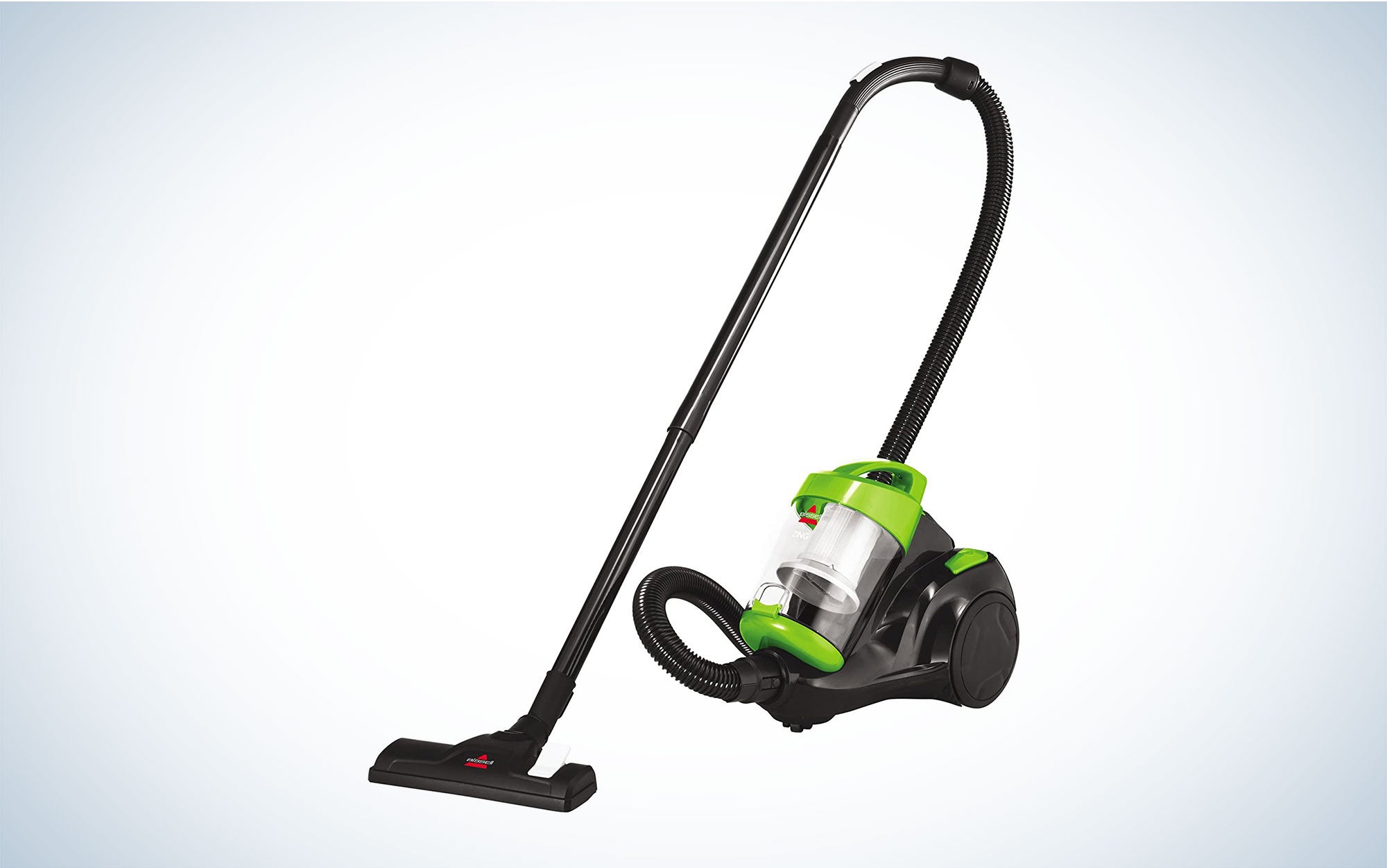
Credit: www.popsci.com
Frequently Asked Questions Of Best Vacuum For Stairs
What Is The Best Vacuum To Vacuum Stairs?
The best vacuum for stairs is subjective and depends on your specific needs. However, some popular options are the Shark Navigator Lift-Away ADV Upright Vacuum and the Bissell PowerForce Helix Vacuum. These vacuums are highly rated and effective for cleaning stairs.
Additionally, handheld vacuums like the Bissell Pet Hair Eraser and the Powools Pet Hair Handheld Vacuum are also recommended for their convenience and portability.
What Is The Easiest Way To Vacuum Stairs?
The easiest way to vacuum stairs is to use a handheld vacuum or a vacuum with a detachable hose and brush attachment. Start from the top and work your way down, using short back-and-forth motions. Be sure to clean corners and edges thoroughly.
What Is The Best Shark Vacuum Cleaner For Stairs?
The best shark vacuum cleaner for stairs is the Shark Navigator Lift-Away ADV Upright Vacuum.
Which Dyson Is Best For Stairs And Pet Hair?
The best Dyson for stairs and pet hair is the Dyson V11 Animal.
Conclusion
Choosing the best vacuum for stairs can make the task of cleaning them much easier and more efficient. While there are several options available in the market, our top picks include the Shark Navigator Lift-Away ADV Upright Vacuum and the Bissell Pet Hair Eraser Lithium Ion Cordless Hand Vacuum.
These vacuums offer great performance, convenience, and value for money. So, say goodbye to the hassle of cleaning stairs and hello to a cleaner and healthier home!
Dyson V8 Absolute:
Pros:
- Powerful Suction
- Cordless Convenience
- HEPA Filtration
- Versatile Attachments
Cons:
- Limited Battery Life
- Higher Price
Shark Navigator Lift-Away Professional NV356E:
Pros:
- Lift-Away Functionality
- Anti-Allergen Complete Seal Technology
- Large Dust Cup
- Reasonably Priced
Cons:
- Corded Design
- Bulky and Heavy
Bissell Cleanview Swivel Rewind Pet Upright Bagless Vacuum Cleaner:
Pros:
- Swivel Steering
- Pet-Friendly Features
- Automatic Cord Rewind
- Affordable
Cons:
- Not Suitable for Allergy Sufferers
- Build Quality
Hoover Linx Cordless Stick Vacuum Cleaner:
Pros:
- Cordless Convenience
- Lightweight
- Interchangeable Batteries
- Reasonable Price
Cons:
- Limited Battery Life
- Basic Attachments





